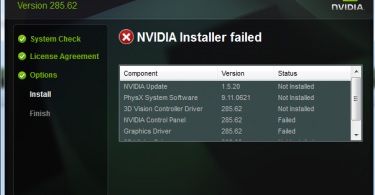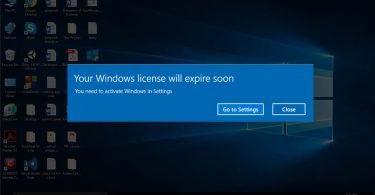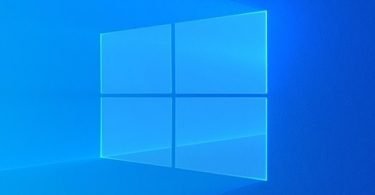We all are familiar with Windows Explorer, but after Windows 8 upgraded to Windows 10, the Windows Explorer is also renamed to File Explorer. As we all are Windows users, we know the function of the File Explorer. The performance of File Explorer has been boosted with better features and easy to use interface. And so here is the guide of how to get help with File Explorer in Windows 10 to understand its features better. You need File Explorer to move files from one destination to other or to open the various documents. T
his article is perfect for those who are new to Windows 10 Operating System and don’t have any idea about the interesting features of Windows 10 File Explorer.
Today we are going to discuss the typical ways to launch File Explorer followed by some ways by which you can get help with Windows 10 File Explorer.
How to Launch File Explorer in Windows 10?
With the help of shortcut keys, you can launch different applications on your PC quickly. Our keyboard offers same shortcut keys to launch File Explorer and Windows Explorer as well. Also to navigate easily within File Explorer, check out some shortcut keys.
The first usual way of launching File explorer is using the Search bar. Just type File explorer or Explorer in the Search bar and press Enter.
For Quick Access to File Explorer, you can pin the Explorer to the taskbar. For pinning, right click on File Explorer and choose Pin to Taskbar or Pin to start.
- Windows Logo key + E: launch File Explorer.
- Ctrl + E – go to the search box
- Alt + D – go to the address bar
- Ctrl + F – go to the search box
- Shift + Delete – permanently delete file or folder
- Ctrl + N – Open a new File Explorer window
- Alt + Enter – Display the Properties dialog box for the selected file or folder
- Alt + Right arrow – View the next folder
- Ctrl + W – Close the current File Explorer window
- Alt + Left arrow – View the previous folder
- Backspace – View the previous folder
- Alt + Up arrow – View the folder that the folder was in
- Ctrl + Shift + N – Create a new folder
- Alt + P – Show/Hide the preview pane
- Ctrl + mouse scroll wheel – zoom in or zoom out on File Explorer interface. It will change size and appearance on File Explorer views.
- Ctrl + Shift + E – Display all folders above the selected folder
- F11 – Maximize or minimize the active window
- Home – Display the top item in the active window
- Num Lock + plus (+) – Display the contents of the selected folder
- End – Display the last item in the active window
- Num Lock + Asterisk (*) – Display all subfolders under the selected folder
- Ctrl + D – move file or folder to recycle bin
- Num Lock + Minus (-) – Collapse the selected folder
These were the shortcut keys that will come handy to have a quick access while you work with File Explorer. Now let’s move on the next section where you will get to know how you can customize Quick Access in Windows 10.
How to Customize Quick Access in Windows 10
Quick access helps you to access the most used folders and documents on a single screen. It is one of the brilliant features of Windows that helps the users who are very busy. The main screen of File Explorer has a Quick access panel where all the frequently used folders are displayed. You can easily put your favorite or frequently used folders in the Quick Access area by following these easy steps.
Step 1: Right-click on the folder that you want to add on the Quick Access area.
Step 2: Then choose the Pin to Quick Access option.
That’s it. Your selected folder will be put to the panel. But if you want to undo your move in some time, then you can remove the folder from the Quick Access panel as well. To remove or hide the folder follow the steps given.
Step 1: Select the folder that you want to remove, then Right-click on it.
Step 2: Choose the Unpin from Quick Access option.
The folder that you will choose to unpin will be removed from the panel. In this article of Get Help with File Explorer in Windows 10, now we will discuss how you can troubleshoot the File Explorer hangs issue.
Get Help with File Explorer in Windows 10
There are some users who have reported the issue of File Explorer hanging when you right click on it. But do not worry as with the help of these two methods you can easily troubleshoot the problem.
Method 1- Fix File Explorer Crash using Command Prompt
Step 1: Open the Command Prompt window by pressing the Windows icon key+ X at the same time.
Step 2: A black color command prompt window will open. Type netsh and press Enter.
Step 3: Then type winstock reset in the same window. Press Enter.
After completing the above command, restart your system. If the command prompt works then you will be able to see the changes made. If not then you can hop on to the next method.
Method 2- Uninstall Updates to Fix File Explorer Crash
Step 1- Follow the given path, to uninstall the updates.
Start button>> Settings>> Update and Security
Step 2: On the panel on the left side, click on Windows Update. Then click on Update History option on the right side.
Step 3: Now click on Uninstall Updates option. In the following window if you can observe the update option like KB3081448 or KB3081449, then uninstall it by right-clicking on it.
Restart your system and check if the issue still persists.
Windows 10 has brought a lot of new features with it, and so does File Explorer. We hope that this article on get help with File Explorer in Windows 10 will help you to work effectively and resolve any issue that you face with File Explorer. If you have any questions about the topic, do leave a comment below. Also, we would love to hear your thoughts, suggestions or opinions on the post.
























